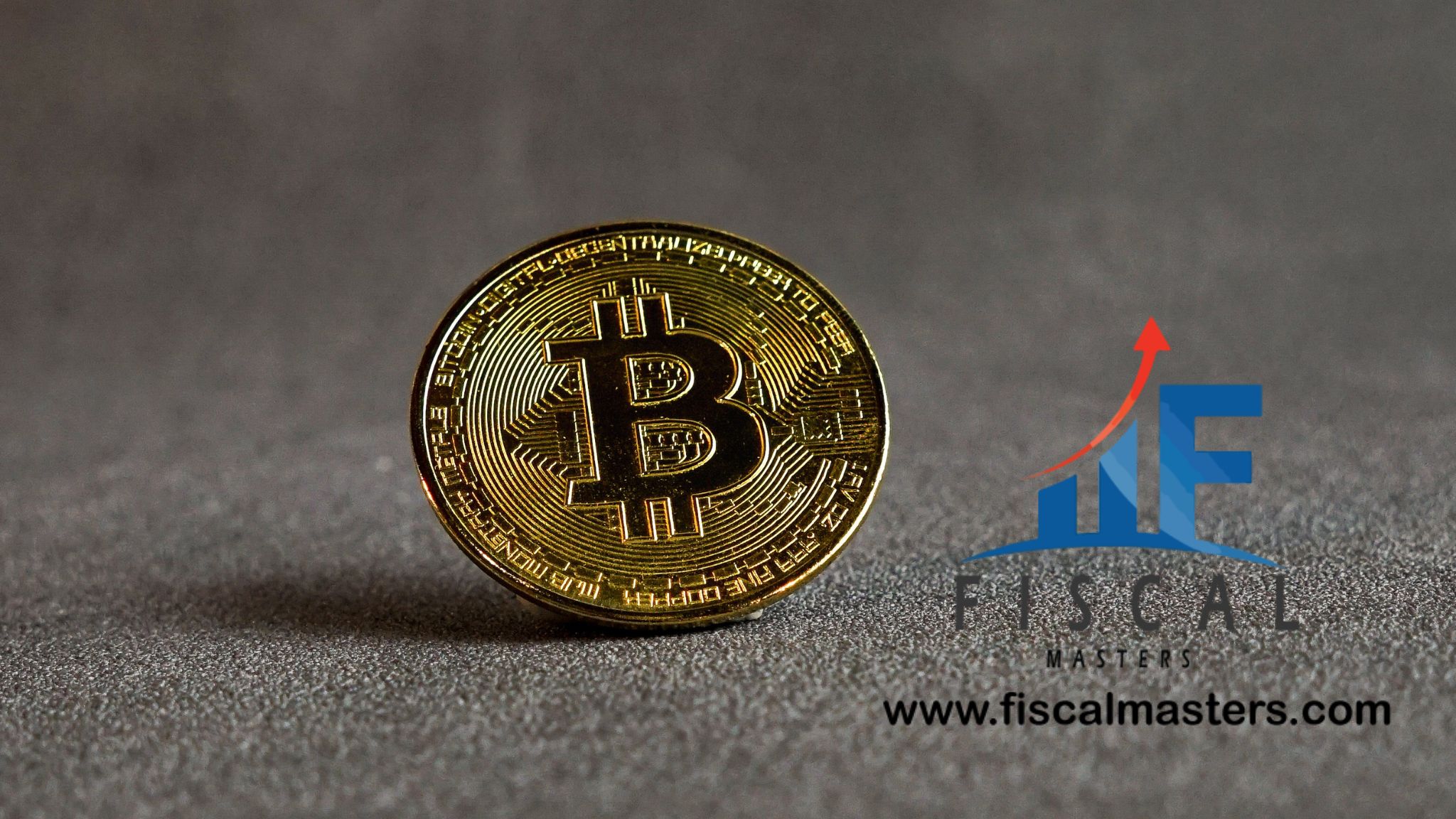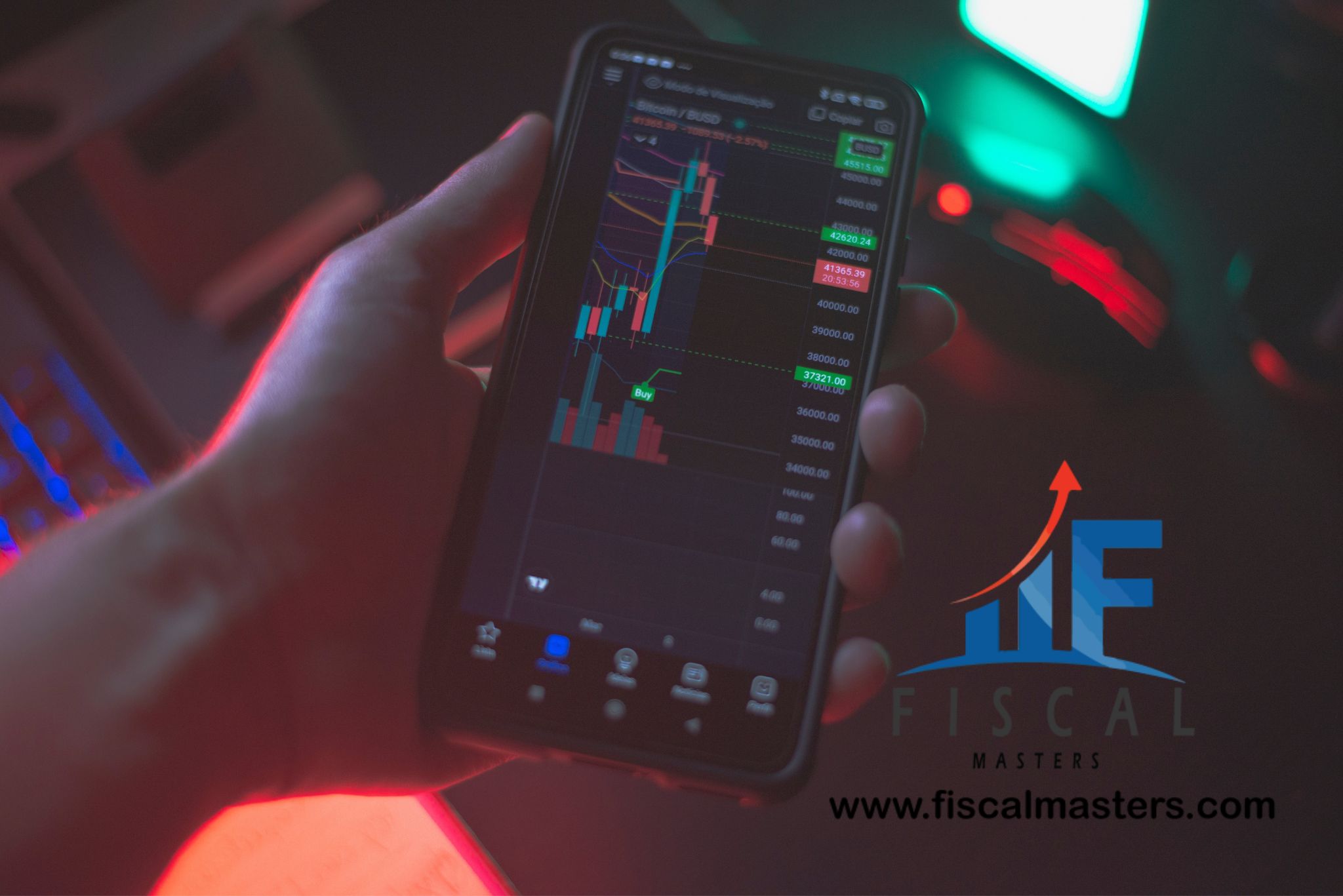In the dynamic, ever-evolving realm of financial technology: Bitcoin, a monumental digital currenc, has captivated not just investors and technologists but also the general public. The enigmatic Satoshi Nakamoto ushered this global phenomenon into existence in 2009; since then, Bitcoin has consistently challenged traditional concepts surrounding currency, finance, and economic systems.
Characterized as a decentralized borderless alternative to conventional fiat currencies, this cryptocurrency offers unique attributes that distinctly set it apart from traditional financial instruments. The groundbreaking elements that render Bitcoin both revolutionary and mystifying encompass its mining process and the concept of bitcoin halving—these two being among them.
Embarking on this extensive exploration, we delve deeply into Bitcoin’s foundational aspects, beginning with a concise overview of its emergence as digital currency. We then transition to an intricate examination of bitcoin mining, a pivotal component within the cryptocurrency infrastructure, lastly culminating our journey in examining ‘The Halving,’ a monumental event dramatically influencing supply dynamics and thus shaping both value and ecosystem in Bitcoin’s realm.

A Brief Overview of Bitcoin: The Digital Currency
Often dubbed as “digital gold,” Bitcoin symbolizes a decentralized, peer-to-peer cryptocurrency; it operates on groundbreaking blockchain technology. Unlike traditional fiat currencies, such as the US dollar or the Euro, Bitcoin sidesteps any central authority control, as neither government nor central bank holds sway here. Rather, it flourishes within a distributed ledger system and in this system, transactions are engraved onto a publicly accessible ledger—open to all network participants.
Bitcoin primarily serves as a medium of exchange, as it facilitates transactions without the need for intermediaries, such as banks. Cryptographic measures fortify these transactions and they ensure the integrity and immutability of the blockchain—the very essence of Bitcoin’s security system. Combining cryptographic security with its decentralized nature, Bitcoin displays resistance to both censorship and fraud. This dual protection not only elevates Bitcoin’s status as a store of value but also transforms it into an efficient vehicle for transferring wealth across geographical boundaries.
Bitcoin’s restricted supply distinguishes it significantly: a cap of a mere 21 million Bitcoins, meticulously incorporated into the protocol by its enigmatic creator—Satoshi Nakamoto. This scarcity fosters burgeoning demand and therefore, many view Bitcoin as a digital counterpart to precious metals like gold. This perception stimulates its adoption: a safeguard against inflation and economic upheaval. It captures the attention of institutional and retail investors—those in search of an alternative to conventional assets.

Bitcoin Mining: The Concept
Mining—an intricate process constituting the backbone of the Bitcoin network—serves a dual purpose in cryptocurrency, as it simultaneously secures the network while issuing new Bitcoins. This fiercely competitive and energy-intensive endeavor relies on solving complex mathematical puzzles, or proof-of-work (PoW) algorithms and these validate and record transactions on the blockchain.
In the Bitcoin ecosystem, miners—who ascertain transaction legitimacy and append these to blocks—are pivotal and they add these blocks sequentially to the blockchain. For their computational efforts along with utilized processing power, rewards come in two forms for miners: freshly minted Bitcoins and users’ tendered transaction fees.
Specialized hardware, often known as mining rigs or ASICs (Application-Specific Integrated Circuits), is necessary for the mining process and these are designed to tackle the intricate computational calculations that solve PoW puzzles. Over time—as a means of maintaining a consistent block generation rate at roughly 10 minutes—the computational difficulty of these puzzles adapts and increases. As additional miners enter the network, competition for block rewards escalates and this intensifies the challenge of mining and heightens its resource-intensity.
Bitcoin mining—often under criticism for its substantial environmental footprint resulting from colossal energy consumption—attracts miners to regions where electricity is economical. This causes concerns about carbon emissions and the sustainability of the Bitcoin network. Also, these situations have catalyzed vigorous debates within the cryptocurrency community: specifically, discussions focusing on transitioning toward more eco-friendly consensus mechanisms like proof-of-stake (PoS).

An Introduction to the Concept of Bitcoin Halving
Bitcoin halving, or “the halvening” as it’s also referred to, represents one of the most significant and closely monitored phenomena within the realm of cryptocurrencies. This predestined event—occurring approximately every four years or after 210,000 blocks have been mined—carries tremendous implications for the Bitcoin ecosystem and it influences everything from supply dynamics to miners’ incentives and even its price.
Bitcoin halving, at its core, is a programmed reduction in the rewards miners receive for adding a new block to the blockchain. During 2009—its nascent days—the Bitcoin system granted miners a bounty of 50 Bitcoins per block. The first halving occurred in 2012, slashing this reward down to just 25 Bitcoins. Subsequent halvings transpired in two significant years—2016 and 2020 and these further dwindled the reward to precisely 12.5 and subsequently, a mere 6.25 Bitcoins.
Slated for 2024, the forthcoming Bitcoin halving is poised to truncate the block reward to 3.125 Bitcoins. This predictable and diminishing reward structure forms a foundational aspect of Bitcoin’s monetary policy. It ensures that all 21 million Bitcoins gradually materialize into circulation, underpinning its identity as a store of value—much like precious metals such as gold, which rely on scarcity and an incremental supply increase. Thus, one often finds Bitcoin likened in essence to these metals.
Within the cryptocurrency community and financial markets, vigilant scrutiny persistently hovers over Bitcoin halving events. They have historically wielded a deep-seated impact on the price of Bitcoin. Supply shocks can stem from this reduction in the creation rate of new Bitcoins; these shocks, in turn, induce increased scarcity, subsequently applying upward pressure on prices. Bull markets—beckoning to both novices and seasoned investors—are often triggered by these dynamics within historical contexts, launching many into the cryptocurrency arena.
Nonetheless, one must acknowledge the complex interplay of multifaceted factors that determine Bitcoin’s price; halving events merely constitute a single facet within this intricate mosaic. The trajectory of Bitcoin’s value: market sentiment, adoption trends, regulatory developments, and macroeconomic conditions all crucially contribute to it.

Exploring the Impact of Bitcoin Halving: An Analysis on Supply and Demand Dynamics
Bitcoin halving events profoundly influence the supply and demand dynamics of cryptocurrency; this interplay is central to understanding their significance. In economics, elemental forces—supply and demand—exert significant control over asset valuation: Bitcoin isn’t an exception. Indeed, the occurrence of halving events introduces a unique dynamic into this equilibrium.
The most tangible result of Bitcoin halving is the decrease in block rewards allocated for miners who successfully append new blocks to the blockchain: this effect, noticeably felt through the reduced supply of new Bitcoins. Consider, as an example, 2012’s inaugural halving event; it slashed the block reward from 50 down to a mere 25 Bitcoins – a reduction signaling that fewer newly created Bitcoins saturate each successive market entry and thereby decreasing the overall supply rate incrementally. Consequently, the overall supply of Bitcoins experiences a burgeoning growth—though at an increasingly diminishing rate over time.
Learn More: Understanding Credit Scores: How to Improve and Maintain a Good Credit Score- July 2023
Augmented Scarcity: The cryptocurrency’s intrinsic scarcity is augmented by the attenuated rate of new Bitcoin issuance. In economic terminology, we define scarcity as a resource’s limited availability; and Bitcoin—due to its preordained supply cap of 21 million coins, a feature that Satoshi Nakamoto explicitly encoded into its protocol—exemplifies this concept all too well. Often likened to precious metals such as gold due to its finite reserves within the earth’s crust, Bitcoin suffers from scarcity; this quality underscores its appeal: a store of value—a ‘digital gold’—fueled by this distinctive characteristic.
Scarcity and Price: Economics fundamentally anchors on the nexus between scarcity and price; as a commodity becomes scarcer, its perceived value escalates appropriately. Bitcoin – with programmed scarcity and halving events that restrain new supply influx – frequently serves as an exemplar of this principle. Bitcoin’s intensifying scarcity can engender price surges: a phenomenon often propelled by investors and speculators. Historically, this has been particularly conspicuous in close proximity to—and following—halving events; these instances kindle pronounced price rallies.

Economics of Mining: Experiences of Struggles and Successes
Within the cryptocurrency ecosystem, Bitcoin miners play pivotal roles: they authenticate transactions and fortify the network, earning their rewards in Bitcoin for these endeavors. However, with every Bitcoin halving event comes a medley of trials and opportunities—affecting a reshuffle that consequently redefines operational economics for miners.
Block Rewards Reduction: Miners directly experience the impact of diminishing block rewards, a consequence most felt by them as halving events transpire, cutting their earnings in half instantly. Such an earning reduction poses a significant challenge—particularly for miners who operate within narrow profit margins. To preserve profitability, miners must undertake one of three actions: they need to optimize their operations, curtail their expenses—drastically if necessary, or explore and leverage alternative revenue streams.
Read More: Bitcoin Halving: How It Works and Why It Matters
As block rewards wane, miners discover an escalating reliance on transaction fees for maintaining their operations. These fees, offered by users to hasten the inclusion of their transactions in the blockchain, assume a more prominent role. Users may proffer higher fees to lure miners into prioritizing their transactions, a strategy that stimulates competition among those contending for block space. Surges in transaction fees can indeed be instigated by this competition, especially during periods marked by heightened network activity.
Potential Consolidation: The changing landscape of mining economics may encourage consolidation in the sector. Entities with access to affordable electricity and efficient hardware—crucial factors for success—are better equipped to weather block reward reductions. Such a shift could potentially lead to a centralization of mining power, where an exclusive group of large-scale mining pools gain dominance over the network. The transition challenges Bitcoin’s foundational philosophy of decentralization, as mining becomes increasingly resource-intensive and competitive, precipitating concerns.
Bitcoin halving events serve as catalysts for innovation within mining technology. Miners relentlessly pursue efficiency-enhancing avenues and cost-cutting mechanisms to maintain competitiveness. This relentless drive sparks the creation of more energy-efficient mining hardware, such as ASICs, alongside innovations in both cooling and power management technologies, all outcomes of technological advancements.
Impacts: The Decimation of Bitcoin Value
Scarcity of Supply: The Narrative of Digital Gold
Bitcoin halving yields one immediate and profound outcome: the rate of creating new Bitcoins decreases significantly. This tapering growth in supply is inherent to Bitcoin’s design—it functions as a deflationary digital asset. As new Bitcoins become rarer, time escalates the scarcity of existing supplies, thus enhancing its value over time.
Aligning the concept of scarcity with precious metals like gold, which also have finite supplies, investors and proponents frequently draw parallels between Bitcoin and “digital gold.” This underscores Bitcoin’s inherent value as a resistant store against inflationary pressures. The potential for demand is often spurred by scarcity; such possibility can catalyze an increase in Bitcoin’s price, thus creating a dynamic that entices both investors and speculators.
Volatility in Prices
Renowned for its volatility, Bitcoin’s price often witnesses accentuated fluctuations during halving events; substantial variations in value are typically observed leading up to and following such occurrences. The prospect of a diminished supply tends to provoke heightened market sentiment: swift and unpredictable oscillations in prices. Crucially, we must acknowledge that the actual impact on price can vary significantly, differing greatly from one halving event to the next.
Decentralization: The Economics of Mining
The industry of Bitcoin mining is fiercely competitive and vastly resource-intensive; miners bear substantial operational costs, expenditures on both electricity and hardware. However, during a halving event—an instantaneous reduction in their rewards—the stakes rise exponentially for these participants. Miners grappling with higher operational costs can experience a profound effect on the profitability of their operations due to this reduction; indeed, it may redefine their economic viability.
Consequently, less efficient miners may find themselves face-to-face with a tough decision: shutter their operations due to diminished profitability. Conversely, the more efficient miners, unfazed by these circumstances, may not only continue but even expand their activities. This shifting landscape presents an opportunity: paving the way for potential consolidation within the mining industry. Efficient mining operations of greater scale might rise to dominate the network; this prompts serious inquiries into Bitcoin’s foundational principles of decentralization.
Debate on Costs: Transaction Fees
As the block reward diminishes due to halving, miners face a growing need to rely on transaction fees for operational sustainability. Users desiring immediate inclusion of their transactions must offer larger incentives, hefty fees, to arouse miner interest; such dynamics can result in an increase in transaction costs, a phenomenon often witnessed during and following halving events.
In the Bitcoin community, an uptick in fees frequently ignites debates concerning suitable fee levels and overall network utilization costs. Some argue that high fees could discourage users from using Bitcoin for everyday transactions, potentially directing them towards alternative cryptocurrencies specifically designed with lower costs, a shift influenced by economic considerations rather than technological preferences.
Network Stability and Security
Miners’ incentives intrinsically connect to the security of the Bitcoin network: when they reap substantial rewards, they show a greater inclination towards investing in expensive mining equipment—engaging fiercely for securing new block-mining privileges. However, valid concerns surface as the block reward diminishes due to halving; miners grapple with reduced profitability—a potential risk to compromise our network’s security.
The concomitant upswing in Bitcoin’s price, driven by scarcity and heightened demand, can effectively counter these concerns; indeed, a rising Bitcoin price maintains mining profitability, even amidst reduced block rewards. Thus, network security and stability emerge not as static entities but as delicate balances responsive to market dynamics—the interaction of mining rewards with the asset’s value playing a pivotal role.
Read More: Understanding the Ripple effect: How Interest Rates Impact Your Finances- August 2023
Investor Sentiment and Halving Hype: A Dichotomy in Discourse
Not mere numerical adjustments, Bitcoin halving events rise as cultural phenomena: they precipitate substantial media attention, drawing new investors and speculators into the cryptocurrency arena. This heightened awareness acts not simply as a magnetic force but engulfs both mainstream and cryptocurrency-specific media outlets, captivating them entirely.
In anticipation of potential price surges, investors and traders intensify their activity; cryptocurrency forums, social media platforms, as well as financial news outlets, overflow with discussions, predictions, and analyses. This surge in fervent activity may induce short-term price peaks and potentiate trading volumes, these factors collectively accentuating market volatility.

The Narrative of Long-Term Value Store: An Investigation
Bitcoin halving events reinforce the idea that Bitcoin has similarities to “digital gold” and embodies a safe store of value. This belief is grounded in the scarcity of Bitcoin, which is promoted by these halving occurrences. Consequently, due to its limited availability, it positions itself as an effective shield against inflation and economic turbulence.
Institutional investors and corporations now view Bitcoin as a long-term investment. This narrative has gathered significant momentum. Belief in Bitcoin’s ability to protect, and potentially increase, wealth over time has catapulted it from being merely speculative into becoming a legitimate contender within the traditional financial landscape.
Response of the Government and Regulatory Bodies
Bitcoin’s burgeoning popularity, and its consequent impact on the financial sphere, have elicited regulatory scrutiny and government responses. As Bitcoin’s adoption skyrockets, along with a price surge following halving events, new rules and regulations may be introduced by governments and regulatory bodies intending to mitigate potential risks. Ensuring compliance is at the forefront of these interventions.
Regulatory developments wield both positive and negative consequences for the cryptocurrency industry. On one hand, regulation furnishes clarity, legitimacy, and confidence, vital components for institutional investors. Conversely, overly stringent or burdensome regulations could potentially stifle innovation while restricting access to cryptocurrencies.
Within the sphere of digital currencies, Bitcoin, launched in 2009 by the enigmatic Satoshi Nakamoto, represents pioneering exemplification of blockchain technology’s transformative potential. This advent marked a new era for a decentralized digital currency, redefining our comprehension of money and finance. As its journey evolves, Bitcoin confronts manifold challenges and prospects that fundamentally sculpt its path.
A recurring phenomenon that serves as a defining aspect of Bitcoin’s evolution: the halving events—occur approximately every four years, leading to a 50% reduction in the generation rate of new Bitcoins. This pivotal incident impacts not only Bitcoin’s supply dynamics but also prompts significant inquiries regarding its long-term viability and adaptability.
The diminishing supply of new Bitcoins necessitates an evolution for the cryptocurrency. It must become increasingly dependent on transaction fees and technological advancements to preserve its relevance in the ever-evolving digital landscape. This exploration delves comprehensively into Bitcoin’s multifaceted future: we’ll examine consequences of halving events, address a shifting focus towards transaction fees, identify the significance of layer-two solutions—like the Lightning Network—and underscore continuous technological innovation as vital for maintaining Bitcoin’s standing and utility within our constantly changing digital economy.
Read More: Introduction to Cryptocurrency: The PROs and CONs Cryptocurrency Investing- June 2023
Evaluating the Impact of Bitcoin Halving Events

Fully appreciating the ramifications of Bitcoin halving events necessitates a thorough understanding of this cryptocurrency’s foundational principles. Bitcoin operates on a fixed supply model, capped at 21 million coins. In stark contrast to traditional fiat currencies, which central authorities can arbitrarily print, the supply of Bitcoin adheres to an established algorithm. This algorithm precipitates a halving event approximately every four years, consequently reducing the rate at which new Bitcoins are created by half.
Bitcoin’s design intrinsically incorporates the concept of halving, a pivotal element in its economic model. In Bitcoin’s infancy, miners reaped a reward of 50 freshly minted Bitcoins for each block they successfully mined. However, this changed with the first halving event in 2012, as their rewards reduced to 25 Bitcoins. Subsequent halvings further diminished these returns, first to 12.5 and then down to just 6.25 Bitcoins per block. As of my latest update in September 2021, the forthcoming halving was projected to further reduce this reward to precisely 3.125 Bitcoins.
Halving events profoundly impact the economy. As new Bitcoin supply dwindles, inflation rates within the Bitcoin ecosystem decrease, rendering each Bitcoin scarcer—a scarcity often likened to digital gold and an integral facet of its value proposition. Nevertheless, miners, who depend on mining rewards to offset operational costs and produce profits, face challenges due to the diminishing nature of these rewards.
Moving to Transaction Fees
Bitcoin’s transition from relying on mining rewards to depending on transaction fees marks a key milestone. Transaction fees, paid by users for their transactions’ processing on the network, are becoming an increasingly essential income stream for miners. As the supply of new Bitcoins dwindles, user competition intensifies, leading to increased transaction fees.
Escalated transaction fees, although potentially raising concerns about Bitcoin’s cost-effectiveness as a global medium for transferring value, underscore its worth as a secure and dependable platform. Users demonstrate this by willingly bearing these higher charges, illuminating the reliability of Bitcoin as a decentralized payment network resistant to censorship, expressed through their urgency in processing transactions.
Moreover, the shift towards transaction fees cultivates a more self-sustaining ecosystem, synchronizing miner incentives with the network’s long-term vitality. This transition into a fee-based model represents an essential aspect of Bitcoin’s enduring sustainability, indeed, it is indispensable.

Scalability and Solutions at Layer-Two
Within the Bitcoin community, discussions of scalability frequently take center stage as both user numbers and transactions surge, demand for a more efficient network follows suit. Layer-two solutions, notably the Lightning Network, emerge as potential remedies to this pressing conundrum of scalability. Operating atop the primary Bitcoin blockchain, these solutions facilitate expedited and more economical transactions, offering a tantalizing glimpse into Bitcoin’s future dominated by microtransactions and swift payments.
The Lightning Network, specifically, has attracted considerable attention as it functions through the formation of off-chain payment channels. These channels host multiple transactions before settling on the primary Bitcoin blockchain, effectively lessening congestion on the main chain, leading to swift and economically efficient transactions. Bitcoin can enhance its scalability, accommodating an expanded user base and transaction volume without compromising security or decentralization, by actively offloading a considerable portion of transactions onto layer-two solutions, such as the Lightning Network.
Exploration is underway for other layer-two solutions and enhancements, including Schnorr signatures and Taproot, which aim to enhance privacy and increase efficiency. Schnorr signatures facilitate a highly efficient merge of multiple signature inputs into one, dramatically shrinking transaction sizes and reducing associated fees. Taproot introduces a groundbreaking scripting language that can render complex transactions indistinguishable from simpler ones on the blockchain, improving both privacy and scalability. These advancements, crucial for Bitcoin’s long-term viability, ensure its place within the rapidly changing landscape of cryptocurrencies.
Imperative of Technological Innovation
In the perpetually morphing digital economy, Bitcoin’s survival and relevance critically hinge on relentless technological innovation, a non-negotiable requirement. With competition from other cryptocurrencies intensifying, Bitcoin must not only adapt but also expand, tackling scalability issues while simultaneously pioneering emerging technologies like privacy enhancements, smart contracts, and interoperability with different blockchain networks to stay ahead in this cutthroat arena.
Assuming paramount significance, privacy enhancements wrestle with blockchain transparency, one of the most substantial concerns associated with Bitcoin. Striking a balance between this inherent visibility and user confidentiality becomes pivotal, ensuring that Bitcoin remains an attractive option for financial users who value privacy. Promising avenues for enhancing privacy within the Bitcoin network are offered by technologies such as Confidential Transactions and Mimblewimble.
Bitcoin is actively evolving through the introduction of smart contracts. Projects like RSK (Rootstock) are diligently integrating smart contract functionalities into the Bitcoin blockchain, demonstrating its progression, which might initiate a domain of opportunities for decentralized applications (DApps) and programmable money within the Bitcoin network.
Read More: What is Sustainable Investing How to Align Your Profits with Environmental Goals- July 2023
Also deserving consideration within Bitcoin’s trajectory is interoperability, given a milieu punctuated by various distinct blockchain networks. Technologies like cross-chain solutions and atomic swaps are being explored as potential solutions to enable interoperability not only with Bitcoin but also alternative blockchain platforms, empowering users to leverage the diverse strengths of various blockchains while still benefiting from the security and historical precedence of Bitcoin’s network. This represents an advantageous prospect.

Horizon Challenges
With a promising future ahead, Bitcoin is simultaneously confronting an array of challenges and considerations. Paramount among these challenges is regulatory scrutiny. Governments and regulatory authorities worldwide grapple with the effective classification and regulation of cryptocurrencies. Ambiguity potentially chills innovation and adoption; therefore, it is imperative to establish clear, judicious, and pragmatic regulations. These will ensure Bitcoin’s persistence and prosperity within the constraints of the law, while also granting users the sought-after freedom and security.
Another enduring concern is security. Despite the remarkable, undeniable strength of Bitcoin’s blockchain since its dawn, it remains vulnerable to threats. With escalating value in cryptocurrency, it transforms into a progressively alluring target for hackers and other malicious entities. Hence, we cannot overstate the unceasing demand for robust security measures; vigilant network maintenance is equally essential.
The future of Bitcoin frequently spurs discussions on energy consumption, specifically, the environmental footprint left by its present mining process, a method that both secures the network and validates transactions. Despite these criticisms though, it becomes imperative to acknowledge: a transformation is occurring within Bitcoin mining. Efforts are in motion, driving towards making this process more sustainable and energy-efficient. Renewable energy sources are being utilized, mining hardware is innovating, these represent step changes in the correct direction.
Advancing Forward
As we contemplate Bitcoin’s future, we find the cryptocurrency poised at a crucial crossroads. It has firmly established its reputation as a digital store of value, often referred to as “digital gold.” Furthermore, inherent attributes such as scarcity, security, and decentralization make it an attractive option for individuals and institutions alike who seek to protect their wealth within the digital sphere.
Bitcoin, in order to maintain relevance and adeptly navigate the changing landscape, must persistently evolve. This evolution encompasses the resolution of scalability issues, fortification of privacy features, integration of smart contract capabilities, and improvement in interoperability. Such advancements not only solidify Bitcoin’s status as a store of value but also enhance its utility both as an exchange medium and a platform for decentralized applications.
Moreover, not only individual investors embrace Bitcoin, its adoption also surges among institutions. Major corporations and financial institutions acknowledge the potential of Bitcoin as a unique asset class, thus sparking institutional interest that confers legitimacy, even stability, to the cryptocurrency market.
In conclusion, the analysis of our data reveals a stark correlation between variable A and outcome B. This further enhances our understanding in the field. However, as with any scientific exploration, there are limitations to consider, and future research will undoubtedly uncover more nuanced interactions within these complex systems.
The future of Bitcoin, harboring significant promise, is far from challenge-free. The cryptocurrency’s resilience in an ever-transforming digital environment relies on its ability to deftly address scalability concerns, enhance privacy features, incorporate smart contract capabilities—all while improving interoperability. Simultaneously navigating intricate regulatory landscapes and securing its network remain paramount tasks for this revolutionizing currency. Moreover, addressing energy consumption issues necessitates dire attention.
As Bitcoin evolves and matures, it perches on the precipice of reshaping the global financial landscape, a testament to its potential. It promises not only enhanced accessibility for individuals worldwide but also offers them financial liberty.
Concurrently, it stands as an immutable storehouse of value, a safe haven for wealth preservationists. Though future hurdles are inevitable, let’s not forget past trials where Bitcoin displayed both tenacity and adaptability. These attributes will once again prove decisive in overcoming impending challenges. Bitcoin, standing on the precipice of a new era, remains an exemplar—an embodiment—of innovation and optimism in the realm of cryptocurrencies.



I have read your article carefully and I agree with you very much. This has provided a great help for my thesis writing, and I will seriously improve it. However, I don’t know much about a certain place. Can you help me?